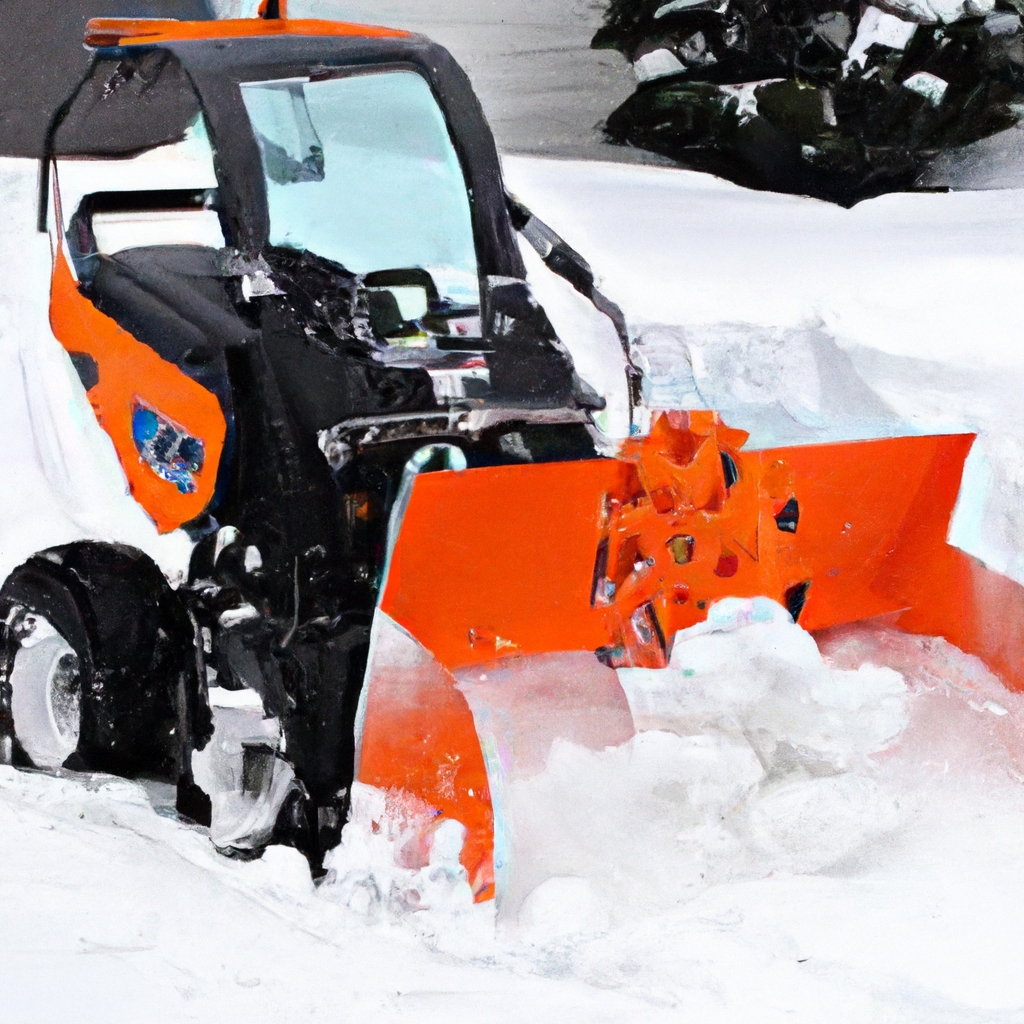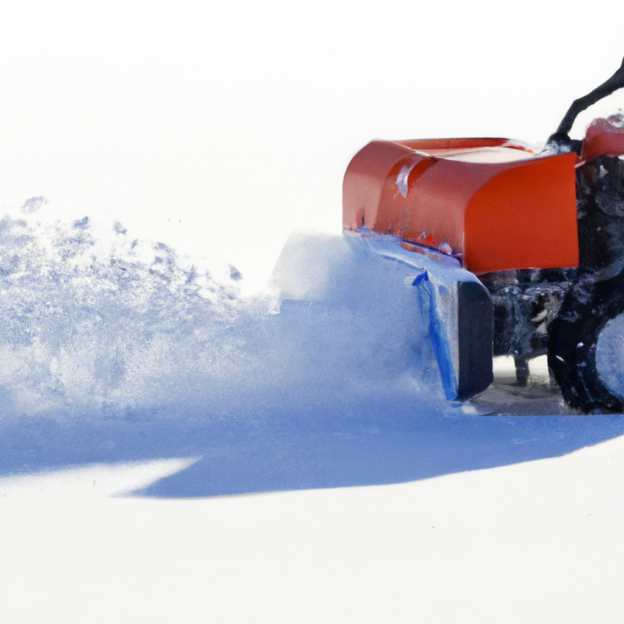When it comes to purchasing a snowblower, it’s important to know what features to look for to ensure you’re getting the right tool for the job. From considering the size and power of the snowblower to the type of transmission and clearing width, there are several factors that can greatly impact the efficiency and effectiveness of your snow clearing endeavors. By understanding the key features to consider, you can make an informed decision and invest in a snowblower that will not only save you time and effort but also make those snowy winter days a little more manageable.
Type of Snowblower
When it comes to choosing a snowblower, one of the first decisions you’ll need to make is what type of snowblower is right for you. There are several options to choose from, each with its own advantages and disadvantages.
Single-stage snowblower
A single-stage snowblower is a compact and lightweight option that is perfect for clearing small to medium-sized driveways and walkways. This type of snowblower uses a single auger to scoop up the snow and throw it out through a chute. While single-stage snowblowers are generally more affordable and easy to maneuver, they may struggle with wet or heavy snow.
Two-stage snowblower
A two-stage snowblower is designed to handle larger areas and heavier snowfall. It uses an auger to break up the snow and a separate impeller to throw the snow out of the chute. This type of snowblower is typically more powerful and can handle deeper, heavier snow. They are also more expensive and may be bulkier and harder to maneuver than single-stage snowblowers.
Three-stage snowblower
A three-stage snowblower is the most heavy-duty option available. It features an additional accelerator that helps break up ice and compacted snow before it is thrown out through the chute. This type of snowblower is ideal for areas with heavy snowfall or where ice is a common issue. However, three-stage snowblowers tend to be more expensive and may require more maintenance.
Electric snowblower
For those looking for a more eco-friendly option, an electric snowblower is worth considering. These snowblowers are powered by electricity and do not emit any harmful fumes. They are generally quieter than gas-powered snowblowers and require less maintenance. However, electric snowblowers typically have a smaller clearing width and may not be as powerful as their gas-powered counterparts.
Gas-powered snowblower
Gas-powered snowblowers are known for their power and ability to handle large amounts of snow. They are typically more expensive than electric snowblowers but offer greater performance. Gas-powered snowblowers come in a variety of sizes and power ratings, allowing you to choose the right one for your needs. However, they can be noisy, emit fumes, and require regular maintenance.
Clearing Width
The clearing width of a snowblower refers to the width of the path it can clear with each pass. The clearing width you choose depends on the size of the area you need to clear and the amount of snowfall you typically experience.
Small clearing width (18-22 inches)
Snowblowers with a small clearing width are perfect for clearing narrow paths, such as sidewalks or small driveways. They are compact and easy to maneuver, making them ideal for tight spaces. However, they may require more passes to clear larger areas and may not be as efficient for heavy snowfall.
Medium clearing width (22-28 inches)
If you have a medium-sized driveway or walkway, a snowblower with a medium clearing width is a good choice. These snowblowers offer a balance between maneuverability and efficiency. They can clear a wider path with each pass and are suitable for areas with moderate snowfall.
Large clearing width (28+ inches)
For those with large driveways or commercial spaces, a snowblower with a large clearing width is the way to go. These snowblowers can clear a wide path with each pass, saving you time and effort. They are designed to handle heavy snowfall and can tackle larger areas quickly and efficiently.

Engine Power
The engine power of a snowblower is an important consideration as it determines how well the snowblower can handle different types of snow and how far it can throw the snow.
Horsepower (HP)
Engine power is often measured in horsepower (HP). Snowblowers with higher HP ratings are generally more powerful and can handle heavier snowfall. If you live in an area that experiences heavy snowfall or frequently deals with icy conditions, a snowblower with a higher HP rating may be a better choice. However, higher HP snowblowers are usually more expensive and may be overkill for lighter snowfall.
Cubic centimeters (cc)
Another way engine power is measured is in cubic centimeters (cc). Generally, higher cc ratings indicate more power and better performance. Snowblowers with higher cc ratings are typically better equipped to handle heavy snow and icy conditions. However, like HP, higher cc ratings often come with a higher price tag.
Chute Control
The chute control of a snowblower determines the direction in which the snow is thrown. There are two main types of chute control: manual and electric.
Manual chute control
Snowblowers with manual chute control require you to adjust the chute direction by hand. While this can be done easily, especially on smaller snowblowers, it does require you to stop and manually adjust the chute each time you want to change the direction. Manual chute control is often found on less expensive snowblowers.
Electric chute control
Snowblowers with electric chute control allow you to adjust the chute direction with the push of a button. This type of chute control is more convenient and allows you to quickly and easily change the direction of the snow without stopping. Electric chute control is often found on higher-end snowblowers.

Clearing Depth
The clearing depth of a snowblower refers to how deep of a layer of snow it can handle at once. The clearing depth you need depends on the average snowfall in your area and how quickly you want to clear your driveway or walkway.
Adjustable clearing depth
Some snowblowers allow you to adjust the clearing depth, giving you more control over how much snow is removed with each pass. This can be particularly useful in areas with varying snowfall depths. However, snowblowers with adjustable clearing depths may be more expensive.
Fixed clearing depth
Other snowblowers have a fixed clearing depth, which means they are designed to handle a specific depth of snow. While these snowblowers may be more affordable, they may not be as versatile in areas with varying snowfall depths.
Auger Design
The auger is the part of the snowblower that scoops up the snow and throws it out through the chute. There are three main types of auger design: single-stage, two-stage, and three-stage.
Single-stage auger design
Single-stage snowblowers have a single auger that both scoops up the snow and throws it out through the chute. This type of auger design is typically found on smaller snowblowers and is best suited for lighter snowfall. Single-stage augers are generally more affordable but may struggle with wet or heavy snow.
Two-stage auger design
Two-stage snowblowers have a separate auger that breaks up the snow and a second stage that throws the snow out through the chute. This design allows for better performance and handling of heavier, deeper snow. Two-stage auger snowblowers are more powerful and can handle larger areas, but they are also typically more expensive.
Three-stage auger design
Three-stage snowblowers are the most heavy-duty option available. They feature an additional accelerator that helps break up ice and compacted snow before it is thrown out through the chute. This type of auger design is ideal for areas with heavy snowfall or where ice is a common issue. However, three-stage auger snowblowers tend to be more expensive and may require more maintenance.

Snow Discharge Distance
The snow discharge distance refers to how far the snowblower can throw the snow. The snow discharge distance you need depends on where you want the snow to be thrown, such as off your driveway or walkway.
Short discharge distance
Some snowblowers have a short discharge distance, which means they can only throw the snow a short distance away. This is typically found in smaller snowblowers and may be sufficient if you have a small area to clear and don’t mind the snow being thrown nearby.
Medium discharge distance
Many snowblowers have a medium discharge distance, which allows them to throw the snow a moderate distance away. This is suitable for most residential properties and can help keep the cleared area clear of snow.
Long discharge distance
For those who need to throw the snow a long distance away, some snowblowers have a long discharge distance. This is typically found in larger, more powerful snowblowers and is ideal for clearing driveways or walkways without throwing the snow back onto the cleared area.
Weight and Maneuverability
The weight and maneuverability of a snowblower are important considerations, especially if you have a large area to clear or need to navigate around obstacles.
Lightweight and easy to maneuver
If you need to maneuver around tight spaces or have a smaller area to clear, a lightweight snowblower is a good choice. These snowblowers are typically easier to handle and maneuver, making them ideal for sidewalks or smaller driveways. However, they may not be as powerful as heavier snowblowers.
Heavy-duty and stable
For those with larger areas to clear or who frequently deal with heavy snowfall, a heavier, more stable snowblower may be necessary. These snowblowers are typically more powerful and can handle larger amounts of snow. However, they may be harder to maneuver and require more effort to operate.

Durability and Build Quality
When investing in a snowblower, it’s important to consider the durability and build quality of the machine. Snowblowers need to withstand harsh winter conditions, so a sturdy construction and high-quality materials are essential for long-lasting performance.
Sturdy construction and high-quality materials
Look for snowblowers that are built with durable materials, such as steel or heavy-duty plastic. A sturdy construction will ensure that the snowblower can handle the rigors of clearing snow without breaking or wearing down quickly. Additionally, consider the overall build quality, including the strength of the handles, the reliability of the controls, and the durability of any moving parts.
Price and Budget
Finally, consider your budget when choosing a snowblower. Snowblowers come in a range of prices, so it’s important to find one that fits within your budget while still meeting your needs.
Affordable options
If you’re on a tight budget or only need a snowblower for occasional use, there are affordable options available. These snowblowers may have smaller engines or clearing widths, but they can still get the job done for smaller areas and lighter snowfall.
High-end models
On the other end of the spectrum, high-end snowblowers offer the latest features and technologies, as well as larger clearing widths and more powerful engines. These models are built for heavy-duty use and are designed to handle larger areas and heavier snowfall. While they come with a higher price tag, they often offer superior performance and durability.
In conclusion, when buying a snowblower, it’s important to consider the type of snowblower, clearing width, engine power, chute control, clearing depth, auger design, snow discharge distance, weight and maneuverability, durability and build quality, and price and budget. By carefully considering these factors, you can choose a snowblower that is well-suited to your needs and ensures that you can tackle even the harshest winter conditions with ease.
